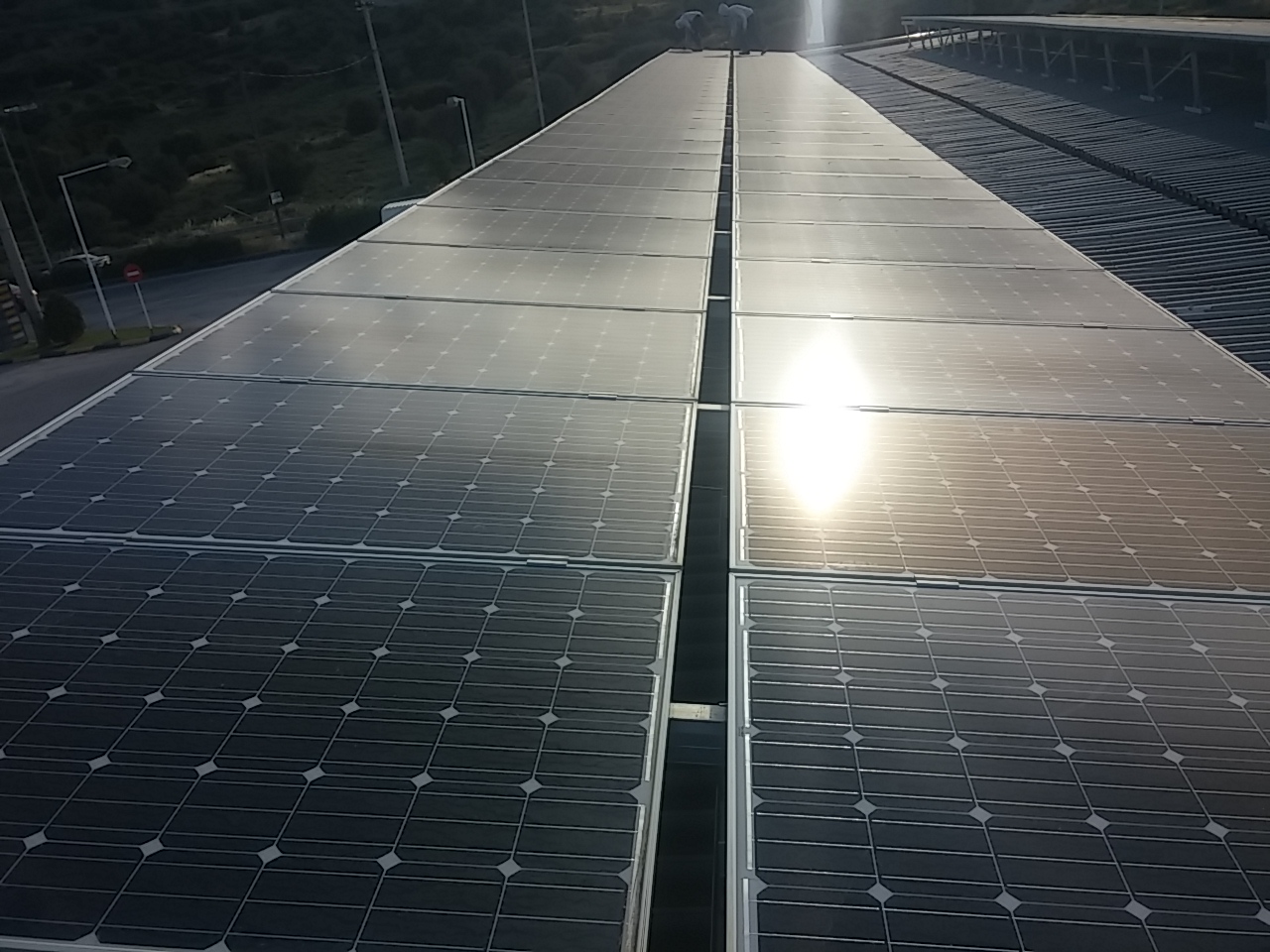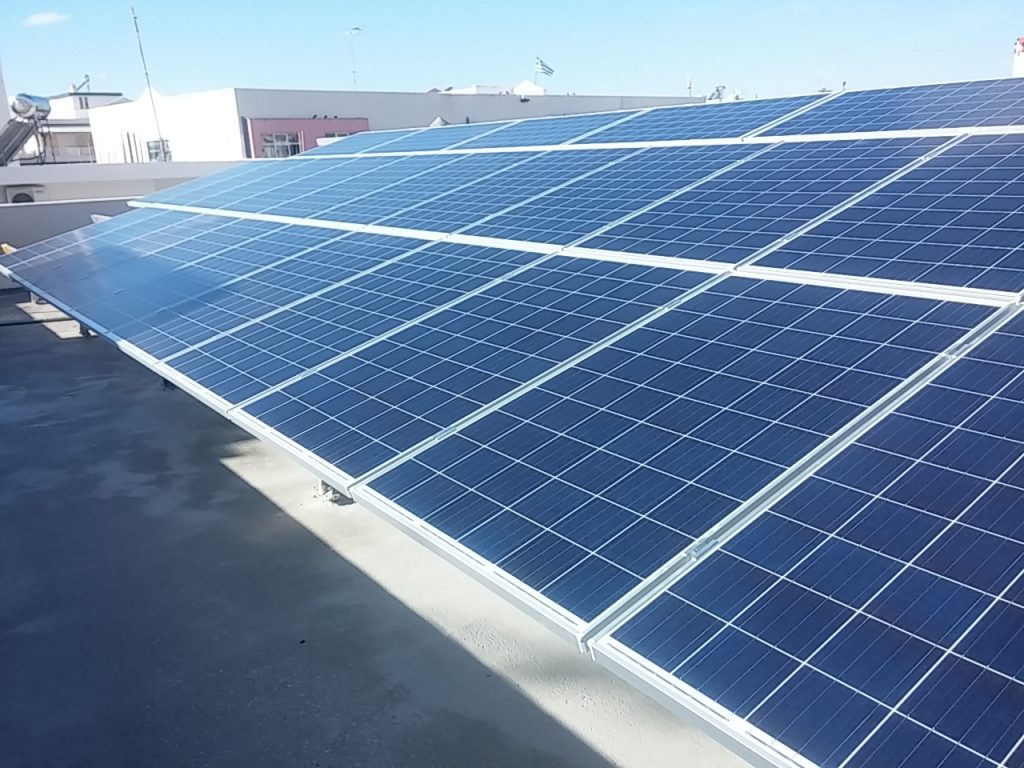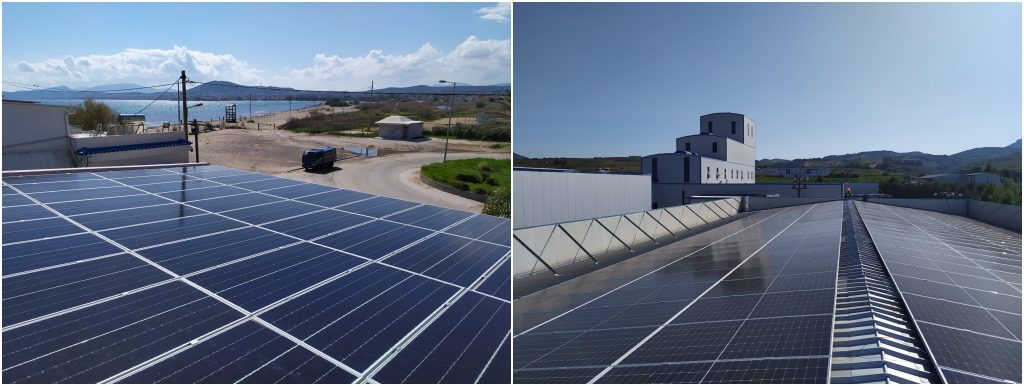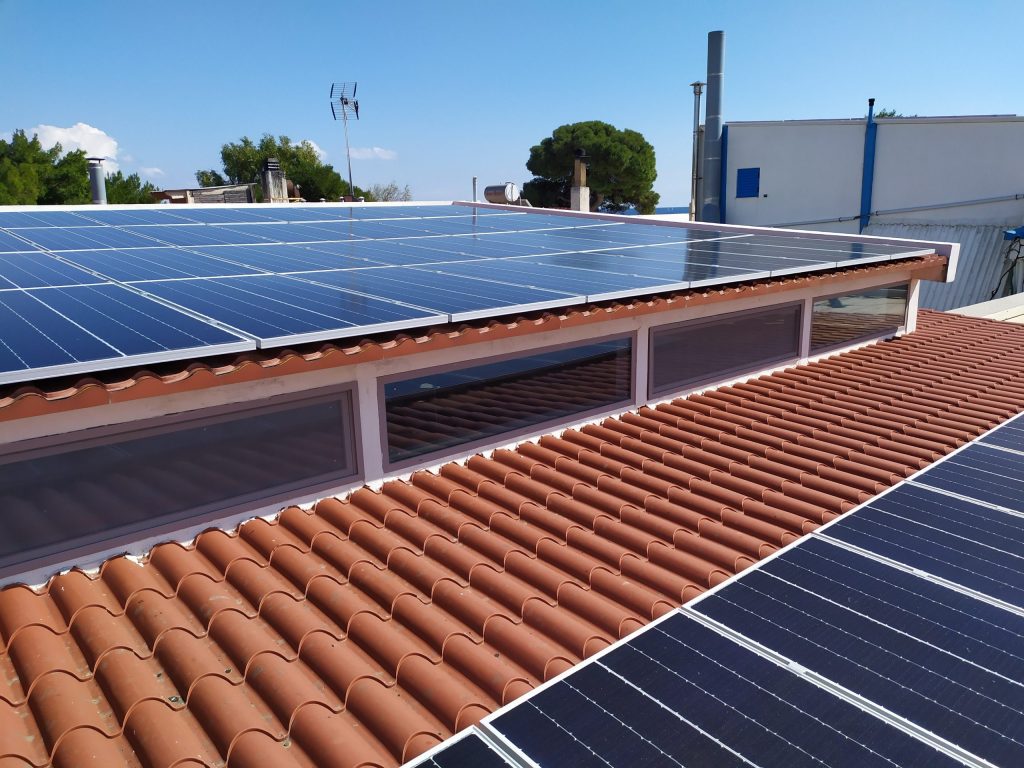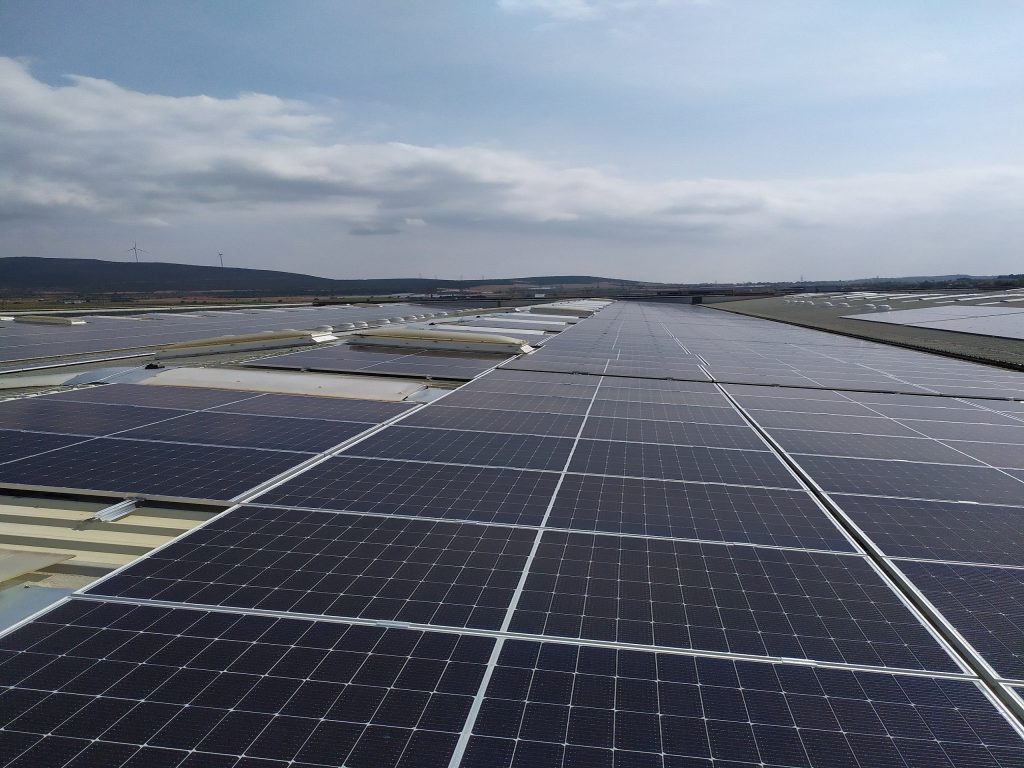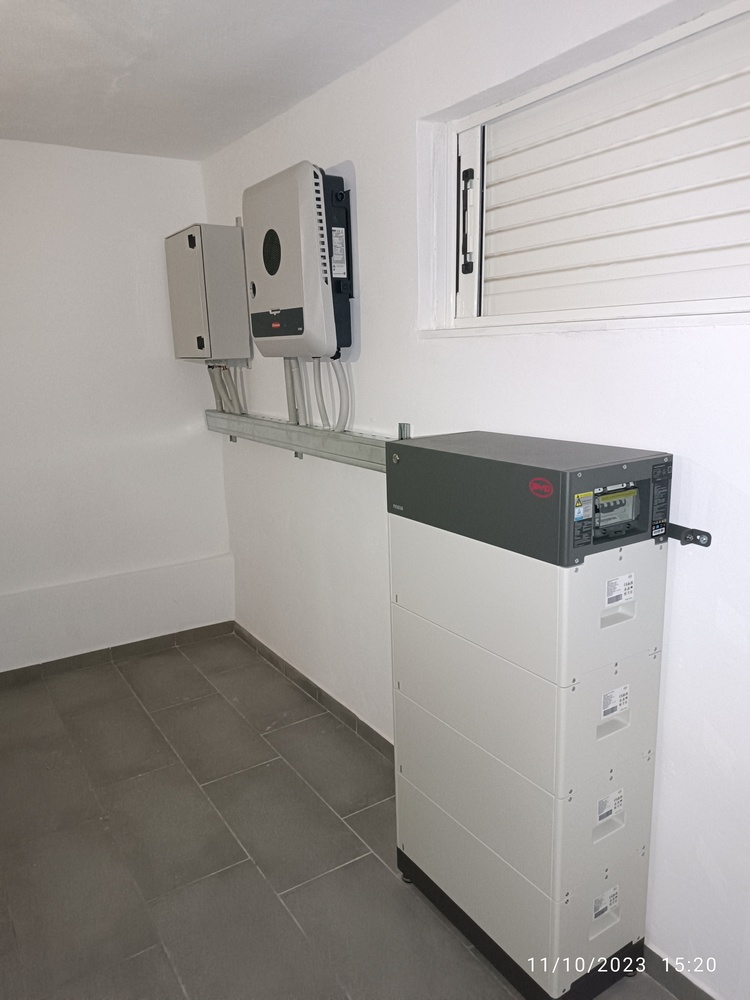Net Metering
Τι είναι;
Το Net Metering (Self Generation with Energy Offset) είναι ένα πρόγραμμα που επιτρέπει στον καταναλωτή να καλύψει σημαντικό μέρος της ενέργειας που καταναλώνει χρησιμοποιώντας
ένα διασυνδεδεμένο φωτοβολταϊκό σύστημα.
Ταυτόχρονα, του δίνει τη δυνατότητα να χρησιμοποιεί το Δημόσιο Δίκτυο Ηλεκτρικής Ενέργειας (ΔΕΗ ή άλλο Πάροχο Ηλεκτρικής Ενέργειας)
για έμμεση αποθήκευση της πράσινης ενέργειας που παράγεται από το φωτοβολταϊκό του σύστημα.
Η αποθήκευση της παραγόμενης ενέργειας μπορεί να γίνει και μέσω μπαταριών που τοποθετούνται στις εγκαταστάσεις του καταναλωτή.
Έτσι υπάρχει η δυνατότητα backup που σημαίνει ότι σε περίπτωση βλάβης του δικτύου, το φωτοβολταϊκό σύστημα με μπαταρία θα δημιουργήσει ένα μικροδίκτυο
που δίνει μικρή ποσότητα ενέργειας για εφεδρικά φορτία όπως ψυγείο, φωτισμός, τηλεόραση, θέρμανση, αντλίες αποχέτευσης.
Το πρόγραμμα Photovoltaics on the Roof επιδοτεί την τοποθέτηση φωτοβολταϊκών πάνελ με μπαταρία.
Έτσι, όταν η παραγωγή είναι μεγαλύτερη από την κατανάλωση, το πλεόνασμα «αποθηκεύεται» στο δίκτυο ή στην μπαταρία και χρησιμοποιείται όταν η έξοδος ΦΒ είναι ανεπαρκής.
Ο τελικός συμψηφισμός και μέτρηση σύμφωνα με την τελευταία υπουργική απόφαση ορίζεται σε τρία χρόνια και θα διενεργείται για τουλάχιστον 25 χρόνια.
Εάν η στιγμιαία κατανάλωση υπερβαίνει τη στιγμιαία παραγωγή του Φ/Β συστήματος, τότε η χρήση του Φ/Β συστήματος πραγματοποιείται αυτόματα με αντίστοιχη χρέωση στον πάροχο.
Για το λόγο αυτό, το Φ/Β σύστημα θα πρέπει πρακτικά να σχεδιαστεί με βάση την ετήσια κατανάλωση του καταναλωτή .
Όροι και προϋποθέσεις
Οι βασικοί όροι και προϋποθέσεις για την εγκατάσταση φωτοβολταϊκού συστήματος αυτοπαραγωγής με ενεργειακό συμψηφισμό είναι:
- Η ύπαρξη ενεργού μόνιμης παροχής ηλεκτρικής ενέργειας στο όνομα του αυτοπαραγωγού
- Το σύστημα φωτοβολταϊκών net metering συνδυάζεται αποκλειστικά με μετρητή κατανάλωσης
- Το φωτοβολταϊκό σύστημα μέτρησης δικτύου εγκαθίσταται στον ίδιο ή παρακείμενο χώρο με την εγκατάσταση κατανάλωσης στην οποία έχει χαρτογραφηθεί
- Ο ενδιαφερόμενος έχει τη νόμιμη χρήση του χώρου εγκατάστασης φωτοβολταϊκού συστήματος.
- Ο ενδιαφερόμενος έχει εξοφλήσει πλήρως τους λογαριασμούς του ρεύματος (ή βρίσκεται σε πρόγραμμα ρύθμισης χρέους).
Virtual Net Metering
Εικονική αντιστάθμιση ενέργειας είναι μια ειδική κατηγορία net metering. Με αυτόν τον τρόπο η κατανάλωση του αυτοπαραγωγού τροφοδοτείται
σε μια παροχή που βρίσκεται σε διαφορετική τοποθεσία από το Φ/Β σύστημα.
Ανησυχίες αντιστάθμισης εικονικής ενέργειας:
Α) (α) οι τοπικές αρχές για την κάλυψη των ενεργειακών αναγκών των επιχειρήσεων κοινής ωφέλειας. και
(α) για επιχειρήσεις κοινής ωφέλειας και δημοτικές επιχειρήσεις
Β) Οι ΟΤΑ για τη στήριξη των ευάλωτων καταναλωτών και την υποστήριξη των ΟΤΑ στην παροχή ενεργειακών υπηρεσιών σε δήμους και επιχειρήσεις κοινής ωφέλειας.
Για την υποστήριξη των ευάλωτων πολιτών των τοπικών αρχών και την αντιμετώπιση της ενεργειακής φτώχειας των πολιτών του δήμου ή της τοπικής αρχής
δήμος ή περιφέρεια που ζει κάτω από το όριο της φτώχειας
(Γ) πρόσωπα που είναι εγγεγραμμένα στο μητρώο αγροτών
Δ) Κοινότητες Ανανεώσιμων Πηγών Ενέργειας & Ενεργειακές Κοινότητες Πολιτών
Μπορούμε να εγκαταστήσουμε τους σταθμούς ηλεκτροπαραγωγής σε οποιαδήποτε περιοχή ανεξάρτητα από το πού βρίσκονται οι εγκαταστάσεις κατανάλωσης
Επιδότηση
Το 2023, η ΣΔΙΤ ανακοίνωσε νέο πρόγραμμα επιχορήγησης για τις ανανεώσιμες πηγές ενέργειας και πιο συγκεκριμένα για τα φωτοβολταϊκά συστήματα.
Ο Υπουργός Περιβάλλοντος και Ενέργειας δήλωσε:
«Πιστοί στην ενεργειακή μας πολιτική, συνεχίζουμε να δημιουργούμε καινοτόμα προγράμματα που συμβάλλουν στη σταθερή μείωση των λογαριασμών ρεύματος
των πολιτών και στη μείωση του περιβαλλοντικού μας αποτυπώματος.
Επιχειρήσεις
Ένα φωτοβολταϊκό σύστημα μέτρησης δικτύου επιτρέπει στον επαγγελματία καταναλωτή και την επιχείρησή του να καλύψει μέρος ή και το σύνολο της κατανάλωσής του.
Αυτό συνεπάγεται τεράστιο οικονομικό όφελος δεδομένων των αυξημένων ενεργειακών αναγκών των επιχειρήσεων.
Το σύστημα αυτοπαραγωγής με ενεργειακό συμψηφισμό προστατεύει επίσης τον καταναλωτή από μελλοντικές αυξήσεις στην τιμή της ηλεκτρικής ενέργειας.
Η όλη συναλλαγή είναι περίπου κιλοβατώρες και όχι χρήματα οπότε η τιμή μας είναι άσχετη.
Για ιδιώτες
Σε συνέχεια των προηγούμενων, τα οφέλη είναι πολλαπλά τόσο για ιδιώτες όσο και για επιχειρήσεις. Προπαντός:
- μειώνει άμεσα τον λογαριασμό ρεύματος
- προστατεύει τον καταναλωτή από μελλοντικές αυξήσεις στην τιμή της ηλεκτρικής ενέργειας, επειδή ο συμψηφισμός βασίζεται στην ενέργεια (σε kWh ηλεκτρικής ενέργειας) και όχι σε λογιστική
- τους απαλλάσσει από ένα μεγάλο μέρος των ρυθμιζόμενων χρεώσεων στον λογαριασμό ρεύματος, για το μέρος της ενέργειας που παράγουν
- συμβάλλει στην προστασία του περιβάλλοντος, ιδιαίτερα σε μια εποχή που ήδη βιώνουμε τις επιπτώσεις της κλιματικής αλλαγής
Υπολογισμός
Αξίζει λοιπόν να υπολογίσετε τι σημαίνει για εσάς το net metering από άποψη επένδυσης, παραγωγής ηλεκτρικής ενέργειας και εξοικονόμησης στον λογαριασμό σας.
Ποιο σύστημα πρέπει να εγκατασταθεί με βάση τις ανάγκες σας και μετά από πόσο καιρό θα είναι η απόσβεση.
Όλα τα παραπάνω και πολλά άλλα λαμβάνονται υπόψη για να σας βοηθήσουν να αποφασίσετε αν αξίζει την επένδυση.
Επικοινωνήστε μαζί μας για να συζητήσουμε το φωτοβολταϊκό σύστημα που ταιριάζει στις ανάγκες σας.
Λογαριασμός
Μπορούμε να μηδενίσουμε τον λογαριασμό ρεύματος;
Ο λογαριασμός έχει πολλές διαφορετικές χρεώσεις. με το σύστημα net metering μηδενίζουμε τις χρεώσεις κατανάλωσης ρεύματος.
Οι άλλες ρυθμιζόμενες χρεώσεις δεν μπορούν να μηδενιστούν, αλλά όμως μπορούν να μειωθούν σημαντικά ανάλογα με το σύστημα που τοποθετείτε και τις ώρες που χρησιμοποιείτε ηλεκτρική ενέργεια.
Τιμές Καθαρής Μέτρησης
Μας ρωτούν συχνά για το κόστος της καθαρής μέτρησης.
Θα ήταν πολύ αυθαίρετο εκ μέρους μας να αναφέρουμε τιμές.
Το κόστος εξαρτάται από πολλούς παράγοντες όπως οι ενεργειακές ανάγκες, το είδος του εξοπλισμού και η ποιότητά του καθώς και η δυσκολία εγκατάστασης.
Η TASIS Energy συνεργάζεται με τους καλύτερους προμηθευτές του φωτοβολταϊκού σας εξοπλισμού, οι οποίοι φημίζονται για την αξιοπιστία και τη συνέπειά τους.
Επικοινωνήστε μαζί μας για να προχωρήσετε στην προσφορά μας αφού μελετήσετε τον χώρο εγκατάστασης και τυχόν ειδικές δυνατότητες που μπορεί να υπάρχουν.
Η ομάδα μας με τεχνογνωσία και επαγγελματισμό, έχοντας ως πυξίδα τον σεβασμό στον άνθρωπο και το περιβάλλον, είναι σε θέση να σας προσφέρει την καλύτερη δυνατή προσφορά.
Για να εγκαταστήσετε σύστημα φωτοβολταϊκών άνω των 10kWp θα πρέπει να υποβάλετε αίτηση στο ΔΕΔΔΗΕ.
Στη συνέχεια υπογράψτε σύμβαση σύνδεσης με τη ΔΕΔΔΗΕ και συμβόλαιο συμψηφισμού με τον πάροχο.
Η διαδικασία υποβολής αίτησης για ΣΔΙΤ για το Φ/Β σύστημα έχει ως εξής:
- Ηλεκτρονική υποβολή της αίτησης σύνδεσης στο ΔΕΔΔΕΟ (διαδικτυακή αίτηση)
- Πληρωμή του τέλους σύνδεσης στο ΔΕΔ-Μ
- Υπογραφή συμβάσεων σύνδεσης και εκκαθάρισης
- Παραγγελία και πιστοποίηση του μετρητή
- Εγκατάσταση φωτοβολταϊκού συστήματος
- Ενεργοποίηση φωτοβολταϊκού συστήματος από τη ΔΕΔΔΕΟ

